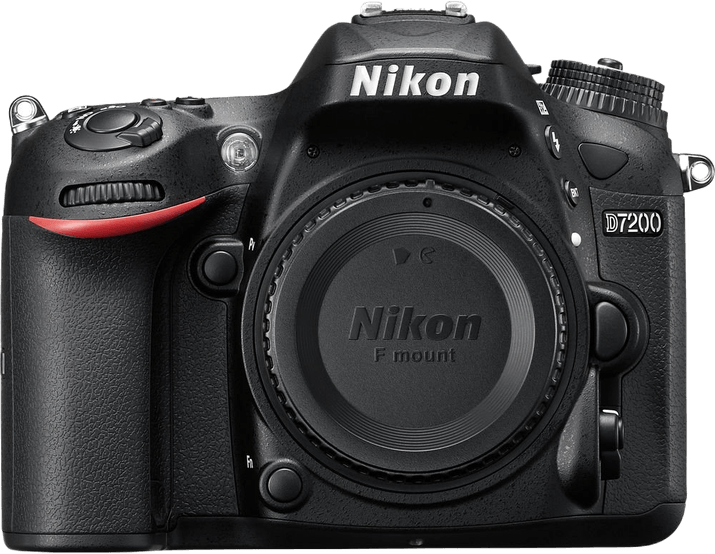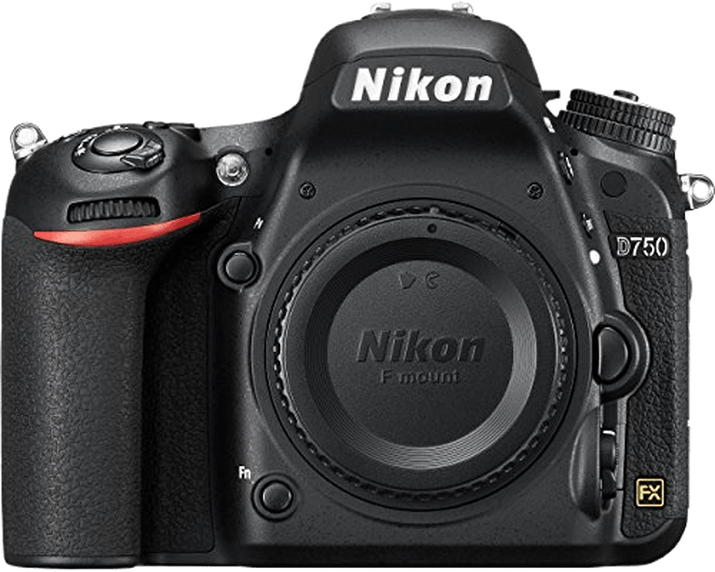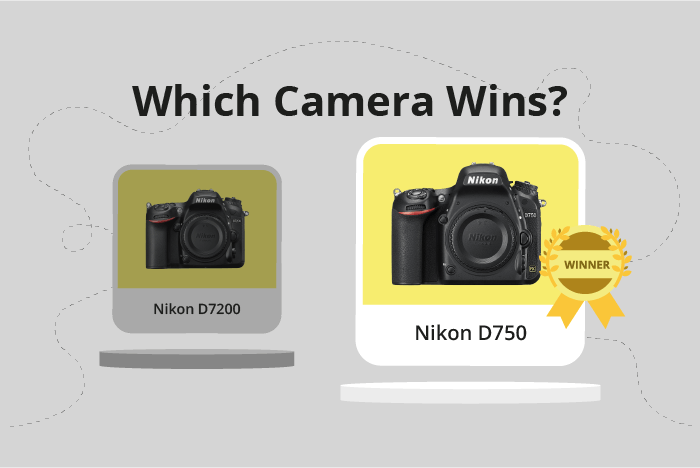Nikon D7200 vs D750 Comparison
Nikon D7200

Nikon D750

The Nikon D7200 and Nikon D750 both scored 68/100, showcasing their similar performance levels. As DSLR cameras, they share common specifications, such as their release years of 2015 and 2014, respectively. The D7200 has a smaller size of 136 x 107 x 76mm and a slightly heavier weight of 765g compared to the D750’s 141 x 113 x 78mm and 750g.
The D7200 has the advantage of a lower launch price of $1,200, making it more affordable than the D750, which was launched at $2,300. However, the D750 has a slight edge in terms of size and weight, offering a more compact and lightweight option for photographers.
Considering the equal score and similar specifications, both cameras offer strong performance for their respective price points. The D7200 stands out for its affordability, while the D750 shines in its compactness and lighter weight.
Nikon D7200 vs D750 Overview and Optics
The Nikon D750 is the winner in the optics comparison with a score of 71/100, while the Nikon D7200 has the same score of 71/100. Both cameras share several common specifications, such as 24 megapixel resolution, CMOS sensor type, Expeed 4 processor, and no image stabilization. They also have Nikon F lens mounts, but the D7200 uses the DX format, while the D750 uses the FX format.
The D750’s advantages include a higher DXOMARK sensor score of 93 compared to the D7200’s score of 87, a larger full-frame sensor, and a slightly faster shooting speed of 6.5 frames per second (fps) compared to the D7200’s 6 fps. These features contribute to the D750’s better image quality, low-light performance, and increased dynamic range. The full-frame sensor and higher DXOMARK score make the D750 a more suitable option for professional photography and demanding situations.
The D7200, on the other hand, offers an APS-C sensor size, which is smaller than the D750’s full-frame sensor. This difference, however, does not necessarily make the D7200 inferior. The smaller sensor size can be advantageous for photographers who require a greater depth of field or need to carry lighter equipment. Additionally, the Nikon F DX lens mount on the D7200 is compatible with a wider range of lenses, allowing for more versatility in lens selection.
Taking these factors into consideration, the Nikon D750 surpasses the D7200 in terms of image quality and low-light performance, making it a superior choice for professional photography. However, the D7200’s smaller sensor size and wider lens compatibility offer advantages for those who value portability and versatility. Ultimately, the choice between these two cameras depends on the specific needs and preferences of the photographer.
Nikon D7200 vs D750 Video Performance
The Nikon D7200 emerges as the superior camera in terms of video capabilities, scoring 70 out of 100, compared to the Nikon D750’s score of 56. Both cameras share some common specifications, such as Full HD video resolution, maximum video dimensions of 1920 x 1080, and a maximum video frame rate of 60fps.
The Nikon D7200’s higher score is due to its built-in time-lapse functionality, which the Nikon D750 lacks. This feature allows photographers to create stunning time-lapse videos without needing additional equipment or software, making the D7200 a more versatile choice for those interested in capturing dynamic scenes.
Although the Nikon D750 has a lower score, it is not without its merits. The camera shares the same video resolution, dimensions, and frame rate as the D7200, ensuring that it can still produce high-quality videos. However, the absence of built-in time-lapse functionality may require users to invest in additional equipment or software if they wish to create time-lapse videos.
Considering the video capabilities of both cameras, the Nikon D7200 is the clear winner due to its built-in time-lapse functionality, providing users with a more versatile and convenient video experience. The Nikon D750, while still capable of producing high-quality videos, falls short in comparison due to its lack of time-lapse features.
Nikon D7200 vs D750 Features and Benefits
The Nikon D7200 and Nikon D750 both have a feature score of 59 out of 100, indicating that they share many similarities in their specifications. Both cameras have a 3.2-inch screen size and nearly identical screen resolutions, with the D7200 at 1,228,800 dots and the D750 at 1,229,000 dots. Neither camera features a touchscreen, GPS, or Bluetooth capabilities. However, they both come equipped with WiFi, allowing for easy sharing and transfer of photos.
The Nikon D750 stands out with its flip screen, providing more flexibility for shooting at different angles and making it easier to capture shots in difficult situations. This feature gives the D750 an advantage over the D7200, as it allows for more creative possibilities and improved user experience.
On the other hand, the Nikon D7200 does not offer any specific advantages over the D750 in terms of features. Both cameras share the same score, indicating that they are on equal footing in this category. However, this does not mean that the D7200 is an inferior camera, but rather that it matches the D750 in many aspects.
The similarity in feature scores between the Nikon D7200 and Nikon D750 highlights that both cameras offer a range of useful features for photographers. The D750’s flip screen gives it an edge in versatility, while the D7200 matches it in all other aspects. Ultimately, the choice between these two cameras will depend on the individual photographer’s preferences and needs, as both offer a solid set of features to enhance the photography experience.
Nikon D7200 vs D750 Storage and Battery
The Nikon D7200 and Nikon D750 both score 79/100 in terms of storage and battery. They share common features, such as having two memory card slots and accepting SD, SDHC, and SDXC cards. Both cameras also use the same battery type, the EN-EL15, and neither offers USB charging.
The Nikon D750 has a slight advantage with a battery life of 1230 shots, compared to the Nikon D7200’s 1110 shots. This longer battery life allows the D750 to capture more images before needing a battery replacement or recharge.
On the other hand, the Nikon D7200 does not have any specific advantages in storage and battery over the D750, as both cameras share the same storage options and battery type.
In terms of storage and battery, the Nikon D750 is the better choice due to its longer battery life. However, the Nikon D7200 remains a solid competitor, as it shares the same storage capabilities and battery type with the D750.
Alternatives to the Nikon D7200 and D750
Are you still undecided about which camera is right for you? Have a look at these popular comparisons that feature the Nikon D7200 or the Nikon D750:

